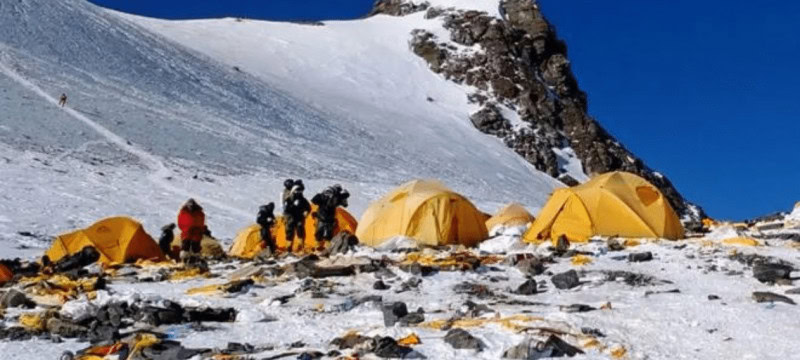The Nepalese army has successfully removed eleven tonnes of trash, four corpses, and one skeleton from Mount Everest and two other Himalayan peaks this year. This cleanup operation, which took troops 55 days, covered Everest, Nuptse, and Lhotse mountains.
Mount Everest alone is estimated to be littered with over fifty tonnes of waste and more than 200 bodies. In response to growing concerns about overcrowding and the hazardous conditions climbers face, the army started an annual clean-up campaign in 2019, addressing the mountain’s reputation as the world’s highest garbage dump. Over the past five clean-ups, the army has collected 119 tonnes of rubbish, 14 human corpses, and several skeletons.
Read more: India to Confirm 79 Missing Persons as Deceased in Himalayan Lake Flood
This year, authorities have implemented measures to reduce waste and improve rescue operations by requiring climbers to wear tracking devices and to carry back their own waste.
Looking ahead, the government plans to establish a team of mountain rangers dedicated to monitoring and collecting rubbish. Rakesh Gurung, the director of mountaineering at Nepal’s Department of Tourism, shared these future plans, indicating that additional funding will be allocated to these efforts.
During the spring climbing season, which concluded in May, the government issued 421 permits to climbers, a decrease from last year’s record-breaking 478 permits. This figure does not include Nepalese guides. Overall, around 600 people climbed Everest this year. The season saw eight climbers either die or go missing, compared to 19 from the previous year. Among those missing are British climber Daniel Paterson and his Nepalese guide Pastenji Sherpa, who were struck by falling ice on May 21. Despite efforts to raise funds for a search team, Paterson’s family announced on June 4 that recovery is currently impossible due to the location and danger of the operation.
Gurung mentioned that the reduced number of permits this year was influenced by the global economic situation, China’s issuance of permits, and the national election in India, which decreased the number of climbers from that country. Future permit numbers are expected to decline further following a preliminary order from Nepal’s Supreme Court in May to limit permits, though no maximum number was specified.
Gurung expressed support for the court’s order and noted that the government is considering reforms such as staggering climbers to alleviate summit traffic jams. The government plans to collaborate with experts to determine a safe number of climbers. “Without a scientific study, it’s hard to specify the perfect number for Mount Everest,” Gurung stated.









